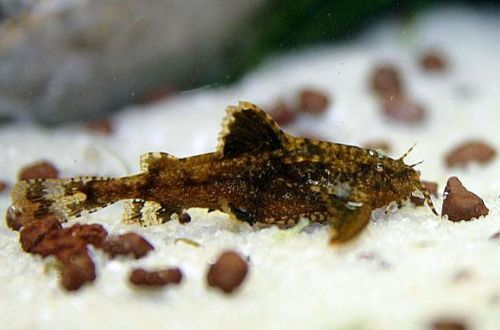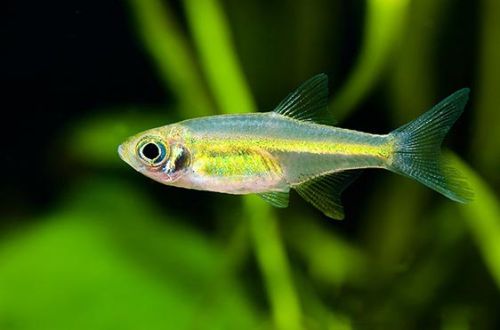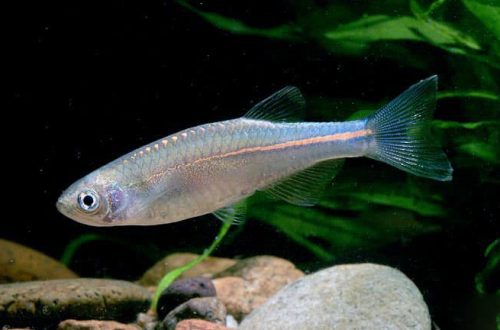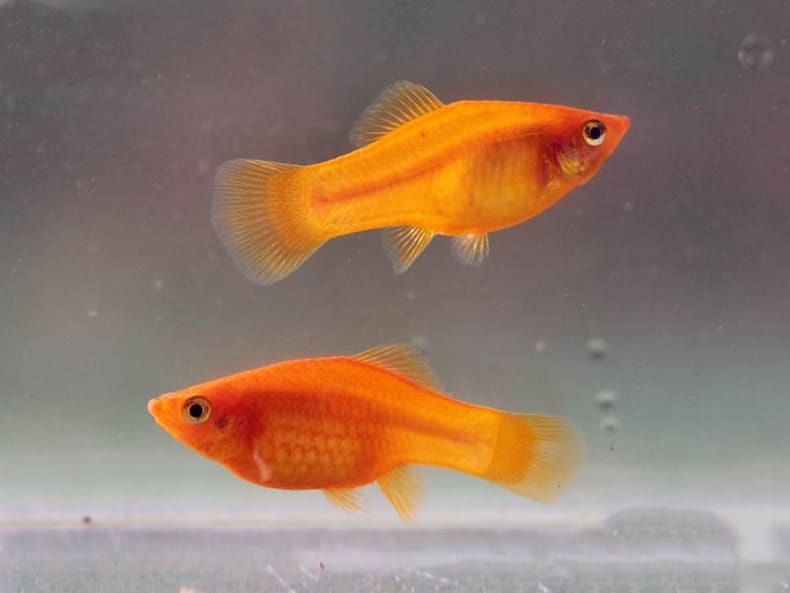
Anchor catfish
Anchor catfish or Hara jerdoni, also found under the name Asian rock catfish, scientific name Hara jerdoni, belongs to the Erethistidae family. An extremely tiny species of catfish, reaching a length of only 3 cm. Great for nano aquariums, compatible with most other fish of a similar size, quite unpretentious and easy to maintain. May be recommended for beginner aquarists.

Contents
Habitat
Occurs from the territory of modern India and Bangladesh. It occurs in small rivers and channels in places with a very slow flow and soft substrates.
Brief information:
- The volume of the aquarium – from 20 liters.
- Temperature – 18-24°C
- Value pH — 5.6–7.5
- Water hardness – soft to medium hard (8-15 dGH)
- Substrate type – sandy
- Lighting – preferably subdued
- Brackish water – no
- Water movement – very little or no
- The size of the fish is about 3 cm.
- Meals – any
- Temperament – peaceful
- Content alone or in a group
Description
Adults reach a length of about 3 cm. Body color varies from light to dark brown. The pectoral fins are of impressive size and are somewhat reminiscent of wings. The ends of the fins have small spikes. Sexual dimorphism is weakly expressed, it is problematic to distinguish a male from a female.
Food
Accepts any sinking food of a suitable size, which must contain protein and vegetable components. Live or frozen foods are welcome, such as bloodworms, daphnia, brine shrimp, etc. The location of the food source does not matter, the catfish has an excellent sense of smell and will find it in any corner of the aquarium.
Maintenance and care, maintenance of the aquarium
The optimal size of the tank for a small group of catfish starts from 20 liters, and one fish can be stored in a nano-aquarium or a regular three-liter jar. The design should include a large number of shelters in the form of snags or other decorative items (ceramic pots, sunken ships, castles, etc.). Vegetation is selected at the discretion of the aquarist or based on the needs of other fish. The substrate is soft sandy.
Adding oak or Indian almond leaves to the bottom will not only beautify the appearance, giving it a natural look, but also give the water a light brown tint, characteristic of the natural habitat of this species. The leaves are pre-dried and then soaked until they sink. Updated once every two weeks.
Particular attention must be paid to the quality of the water, it must be clean without suspension, relatively cool (no aquarium heating system is required) and rich in oxygen. Equipment is customized based on these needs.
Aquarium maintenance comes down to regular cleaning of the soil from organic waste and weekly replacement of part of the water (15–20% of the volume) with fresh water.
Behavior and Compatibility
A peaceful active fish, it fits well into the community of other small friendly species such as Danio, Rasbora, Neons, etc. Due to their small size, large fish should be avoided, especially for other catfish that will compete for food with Anchor Catfish in the bottom layer.
Fish diseases
The main cause of most diseases is unsuitable living conditions and poor-quality food. If the first symptoms are detected, you should check the water parameters and the presence of high concentrations of hazardous substances (ammonia, nitrites, nitrates, etc.), if necessary, bring the indicators back to normal and only then proceed with treatment. Read more about symptoms and treatments in the Aquarium Fish Diseases section.





